In winter, when we’re spending the most time indoors, indoor air can be less than ideal. It’s dry. And it can get stale and boring.

Simmer pots are a nice way to add humidity to your home. That will feel better on your lungs and will be much better for any houseplants or indoor gardening you’re growing.
Using a natural simmer pot is also a chemical-free way to scent your home (as long as the ingredients you choose are natural and chemical-free!).
What better way to give your home seasonal scents and improve your air quality?
Jump to:
- A Cleaner Way to Scent Your Home
- Using Homegrown, Found, and Foraged Ingredients for Simmer Pots
- Finding and Foraging Natural Items at Home to Use for Simmer Pots
- What to look for in the woods or your yard and garden
- Kitchen Additions You Can Add to What You Find
- How Much of Each Ingredient Should You Use in Garden and Foraged Simmer Pot Recipes?
- How to Use a Simmer Pot
A Cleaner Way to Scent Your Home
Candles, oils, and scent warmers can get expensive. There is some concern about the exhaust they put into your air, too.
It’s said the question is not whether or not candles create indoor air pollution—they absolutely do, and that includes all types. Candles release hydrocarbons and other chemicals, including toluene and benzene.
The question is how bad that is for you.
The pollution given off by burning candles is said to be in trace amounts, but there are questions about who is at risk, considering that, comparatively speaking, some medical professionals consider this to be negligible exposure.
Other doctors have greater concerns. It seems the medical community has varying levels of concern over burning candles in the home.
Simmer pots, on the other hand, are simply natural ingredients – like herbs, foraged tree and plant parts, garden produce, flowers, and spices. They are simmered long and low in water and are no more harmful than cooking in your kitchen.
Using Homegrown, Found, and Foraged Ingredients for Simmer Pots
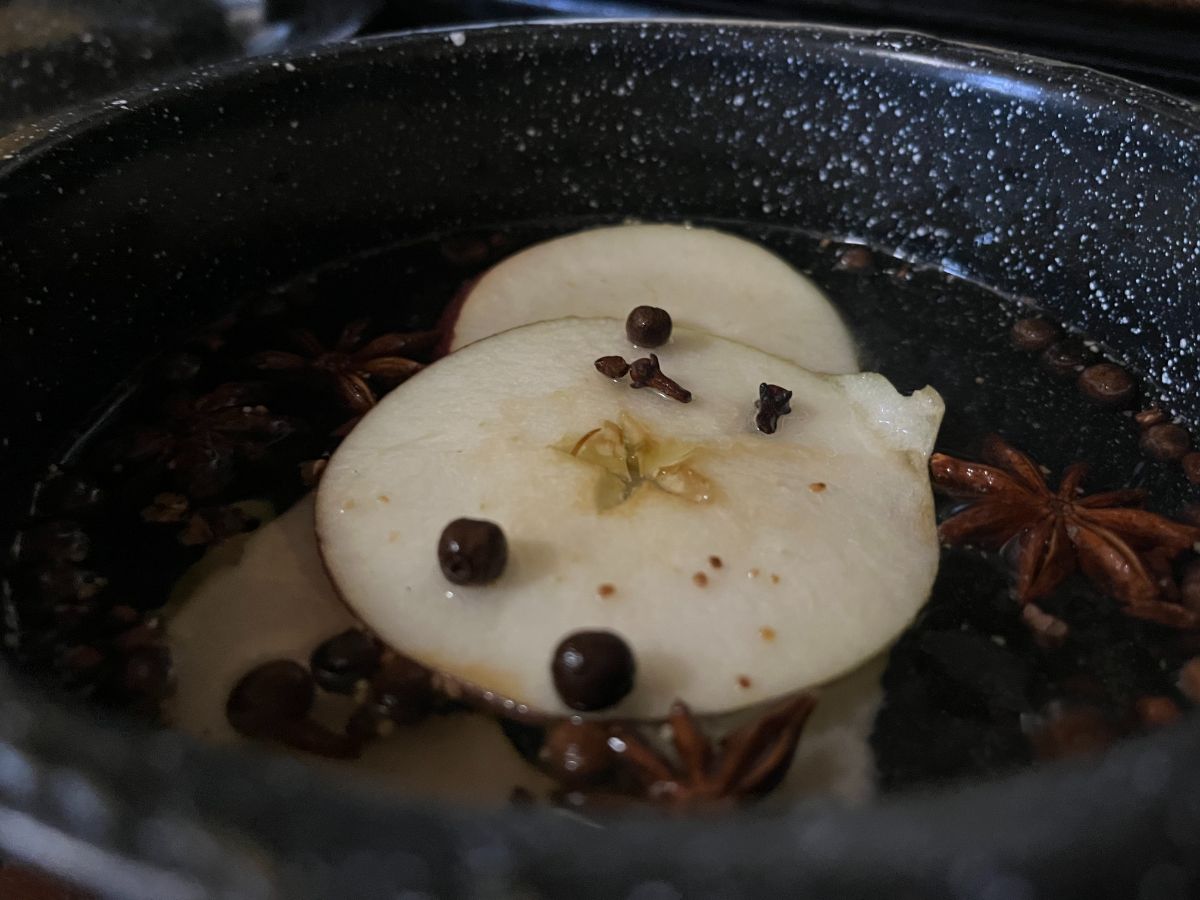
When compared to things like air fresheners, oils, and candles, there are a lot of benefits to scenting your home with homemade simmer pots:
- Non-polluting
- Natural ingredients
- Chemical free
- “Greener” and more eco-friendly
- No manufacturing or transportation involved
- No significant waste products
- 100% compostable ingredients
“Waste” from homemade simmer pots consists of natural forest and garden products that can easily be composted and returned to the ground. There’s no need for packaging, and if you do choose to package your recipes, you can easily choose compostable bags or reusable jars.
Finding and Foraging Natural Items at Home to Use for Simmer Pots

Many of the best and most popular ingredients to use in simmer pots are those that can come straight from the garden or from nature.
Herb gardens are excellent sources of simmer pot ingredients, as are a lot of what you might have in your landscape or ornamental gardens.
If you want to expand your repertoire even further, take a walk along a country roadside or in the woods. You’ll find loads of ingredients to use in your simmer pots there!
What to look for in the woods or your yard and garden
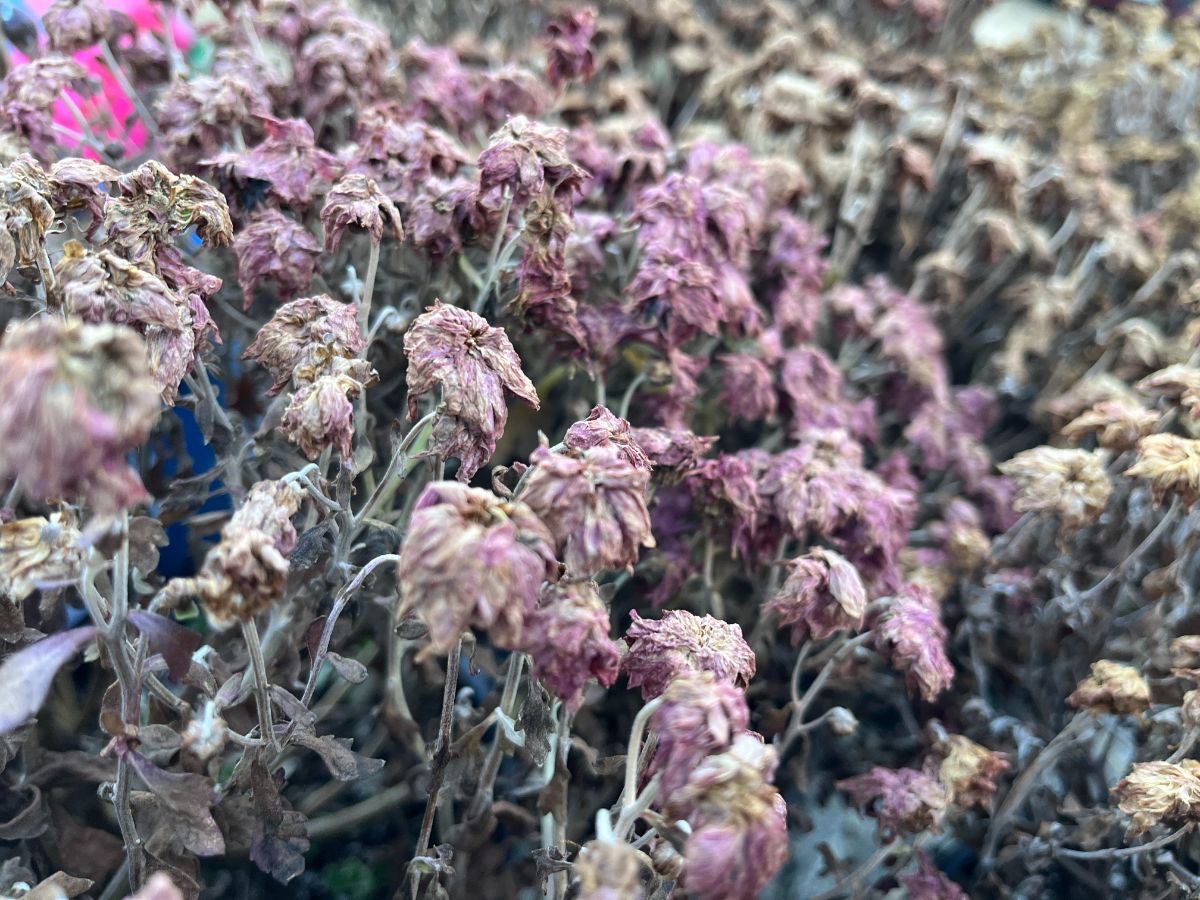
Take a walk around your yard, gardens, neighborhood, or local hiking trails to see what you can find that could work well in your simmer pots. Anything fragrant that strikes your fancy is an option.
Here are some things to look for:
Foraged forest finds:
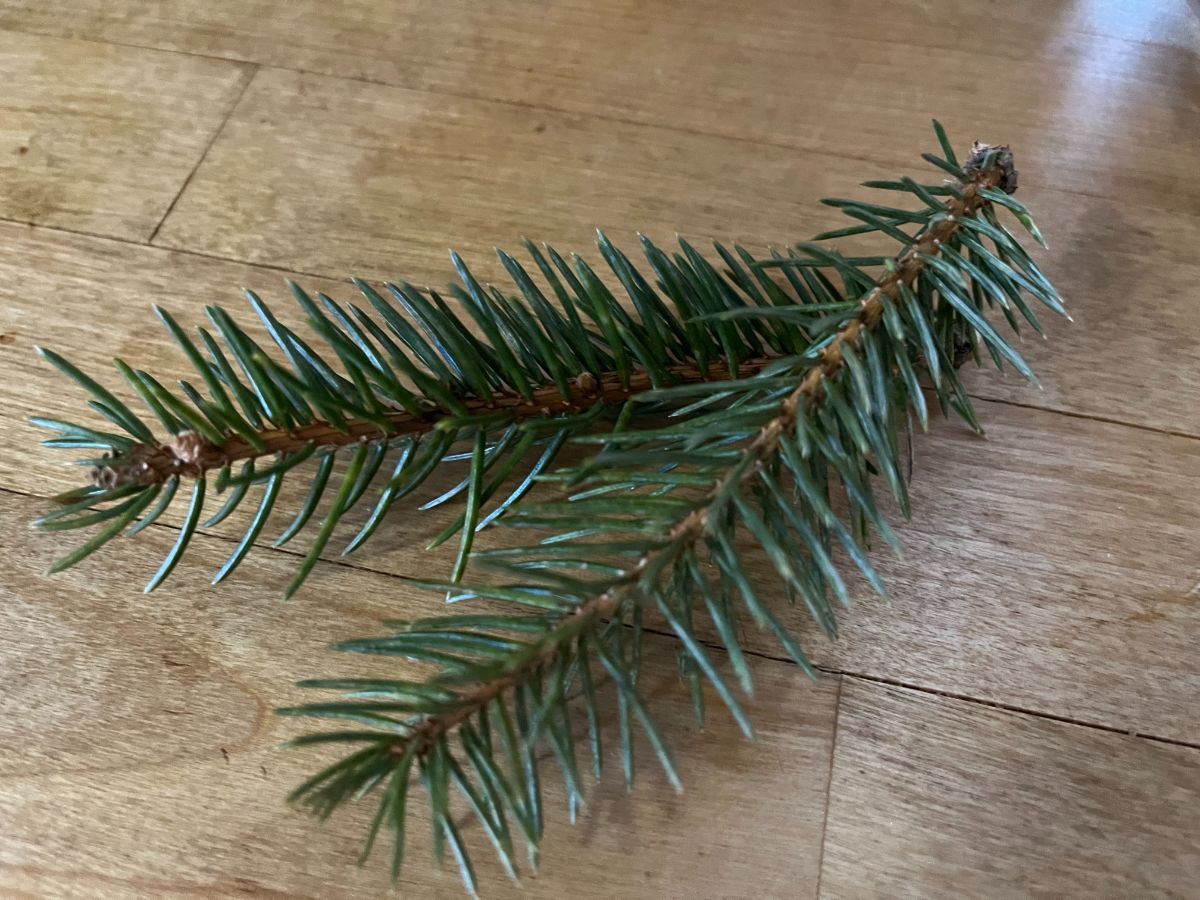
- Pine needles
- Sprigs from evergreens like spruce and fir
- Cedar bark, wood chips, or sprigs
- Pinecones
- Winterberries
- Juniper berries
- Juniper greens
- Hawthorne berries
- Tree bark
- Wintergreen berries
- Wintergreen leaves (wintergreen may also be known locally as tea berries or checkerberries)
In the orchard or berry patch:
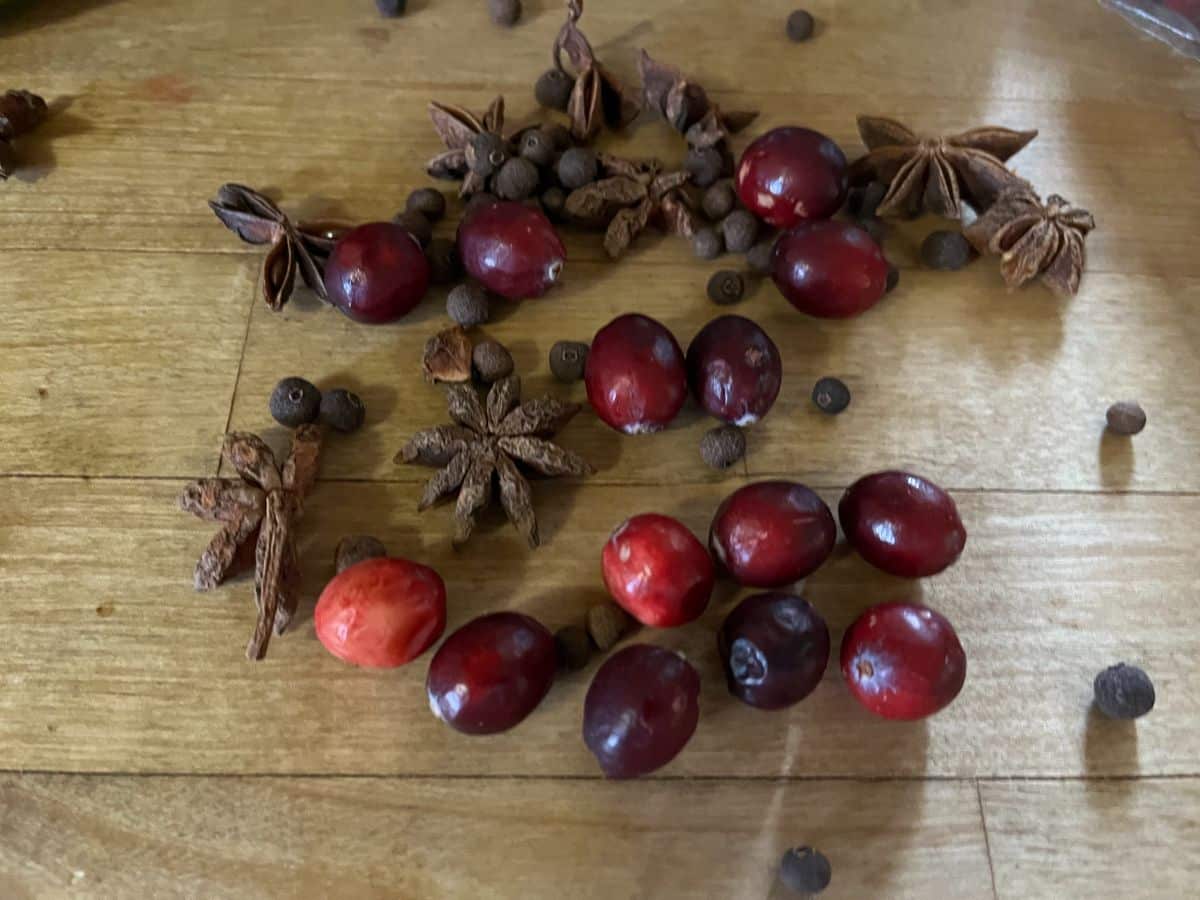
- Raspberry or blackberry leaves
- Currants
- Dried berries (choose your favorite for your favorite scent)
- Dried flowers or blossoms, like elderflower
- Apples
- Citrus
- Pits from stone fruit (peach or plum pits)
- Any fruit you like the smell of
- Apple or other fruit tree blossoms (dry some for the winter!)
- Apple sticks and sticks from other fruit trees that hold a nice scent
From the herb garden:
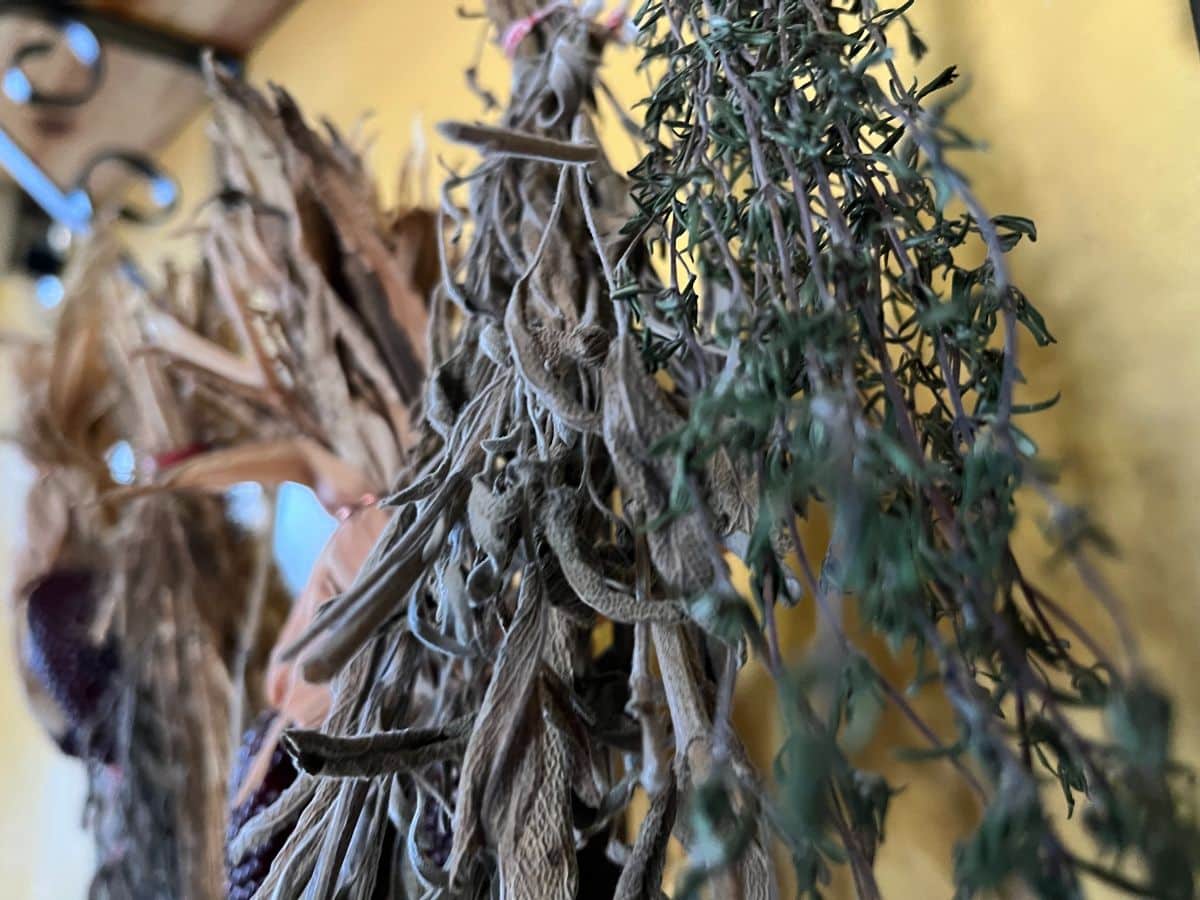
- Mint
- Rosemary
- Sage
- Thyme
- Lavender
- Bay leaves
- Spicebush berries
- Eucalyptus
Look around your landscape:
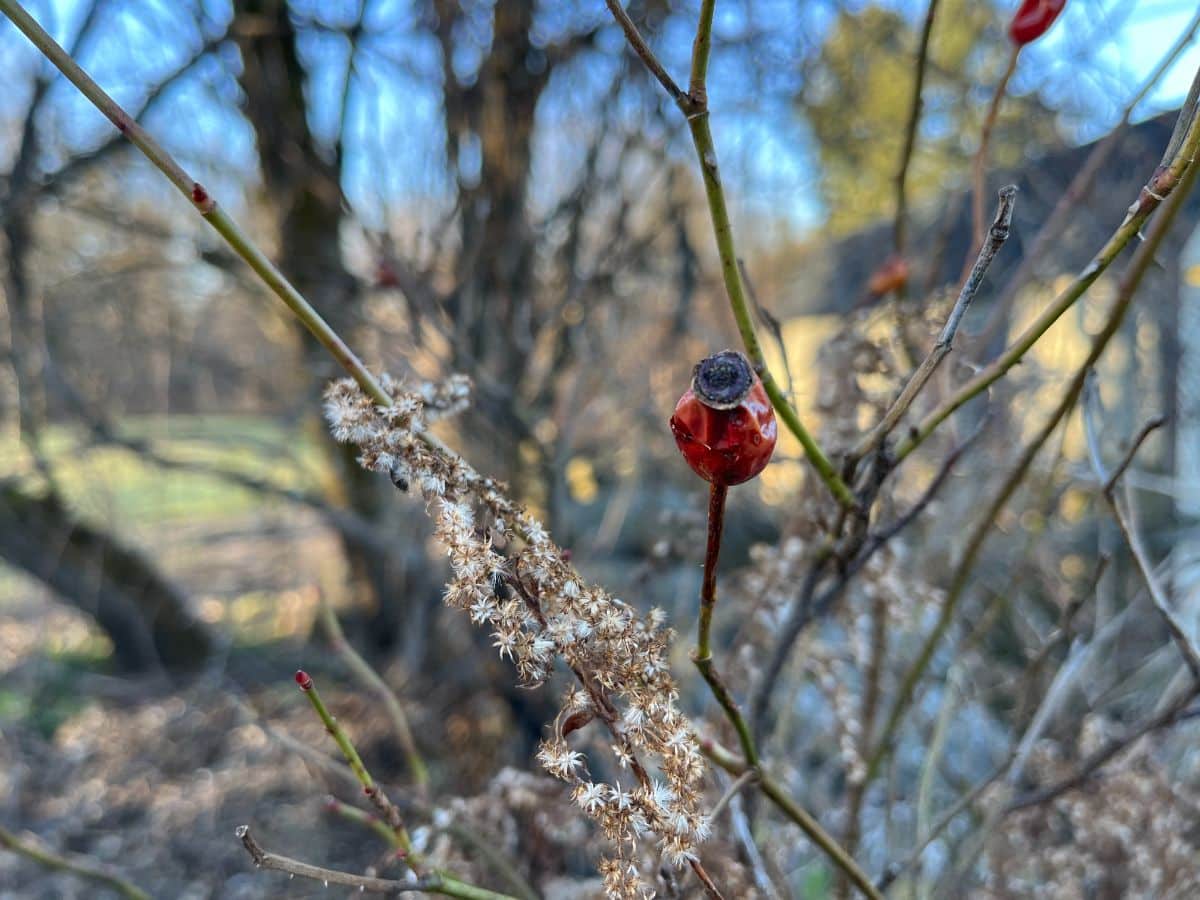
- Rose hips
- Rose petals
- Other fragrant flower petals
- Sprigs from evergreen shrubs or other fragrant shrubs
- Holly leaves
- Holly berries
- Honeysuckle leaves and sticks
- Fragrant dried flower heads or seed heads if they hold scent
- Berries and hips of landscape plants that have a nice scent
Kitchen Additions You Can Add to What You Find

Of course, you can make your simmer pots from exclusively homegrown or foraged items, but there are some common kitchen fruits and ingredients that complement those things nicely, too.
Some good options are:
- Orange slices
- Sliced apples
- Scrap peels from fruits like apples and orange peels
- Whole fruits that are starting to go by, cut into quarters or slices
- Other types of citrus peels or scraps
- Cranberries
- Cinnamon sticks
- Warm, aromatic spices like cloves, allspice berries, or star anise (which looks nice, too!), peppercorns, coriander, or cardamom pods
- Bay leaves
- Fresh or dried ginger or the peels left from using fresh
- Vanilla beans or vanilla extract
- Maple syrup or extract
- Other extracts that you like the smell of, like mint
How Much of Each Ingredient Should You Use in Garden and Foraged Simmer Pot Recipes?
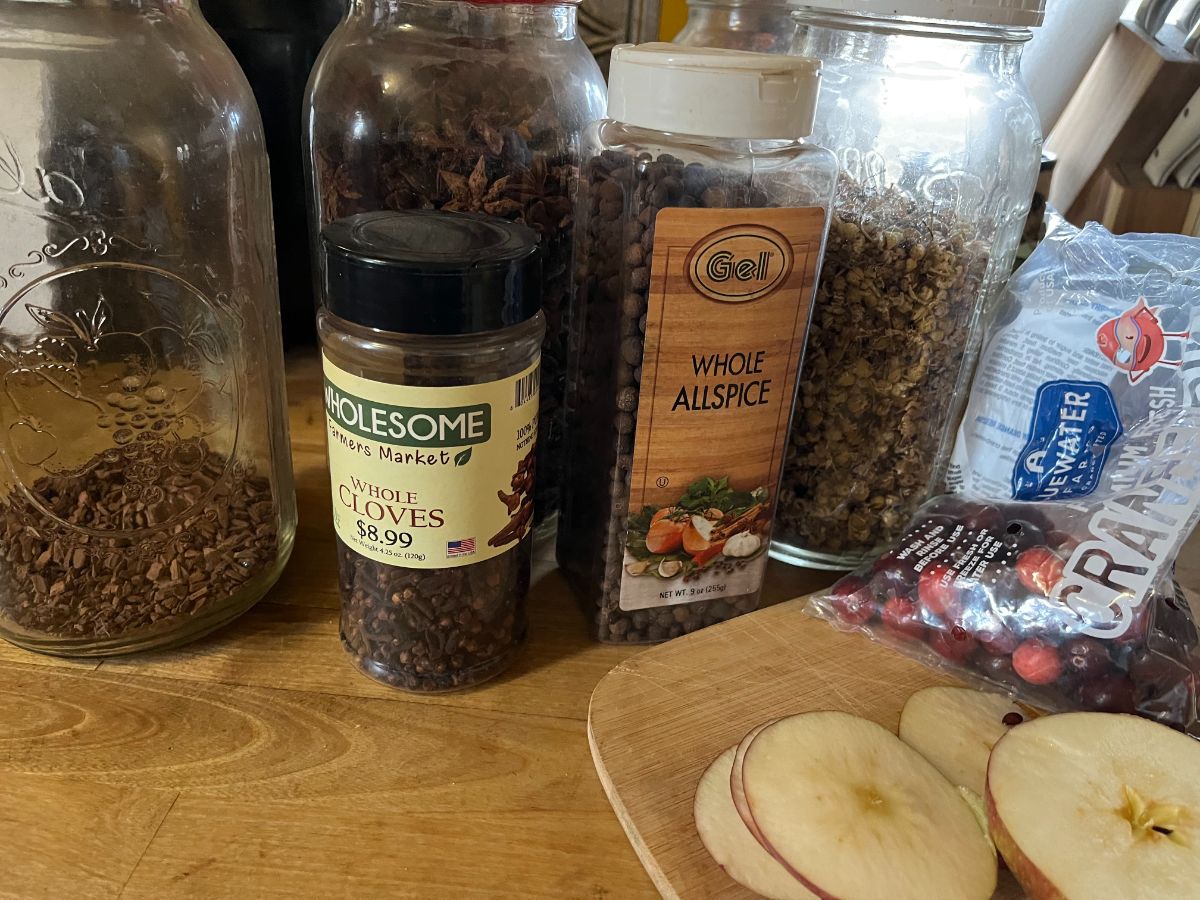
- For sprigs of evergreens or herbs, start with two to three sprigs per pot (or an equivalent amount in flakes or dried)
- Use two fruit slices
- If using peels, use the peels from one whole fruit
- For liquid extracts, use one teaspoon
- For essential oils, three or four drops is a good place to start
- For whole spices, one-half to one tablespoon is a good amount
- For flakes, ground, or dry minced spices, start with about 1 ½ teaspoons (half a tablespoon)
Of course, there are no hard and fast rules for these recipes. You can always add, subtract, use more of something, or back off on something else.
You can also mix as many ingredients together as you want to create your own personal scents. Or, single-ingredient simmer pots are quite nice, too!
How to Use a Simmer Pot

- Place the aromatic ingredients of your choice into the bottom of your simmering pot
- You can mix and match different foraged items to make different scents (as well as household spices and ingredients)
- Use more if you want a stronger, less for a more subtle scent
- Fill the pot about three-quarters full with water
- Place on a wood stove or on your kitchen stove
- Heat on low for several hours
- Keep just at a low simmer
- You can add more water and reuse the same ingredients for as long as they are producing a scent
- When you no longer detect good smells, simply strain the ingredients, empty the pot, rinse, and start again!
You may want to dedicate a pot that you no longer use for cooking and let it be your simmer pot. Many foraged items—like evergreen sprigs, pine cones, and needles—will sometimes release sap, which can be difficult to remove from the pot.
If you do need to try and clean a pot of excess sap or material left from the simmering ingredients, try wiping it well with vegetable or mineral oil (which should remove sticky substances). Then, you can wash with plenty of dish soap and hot water to remove the last of the bits and the oil.

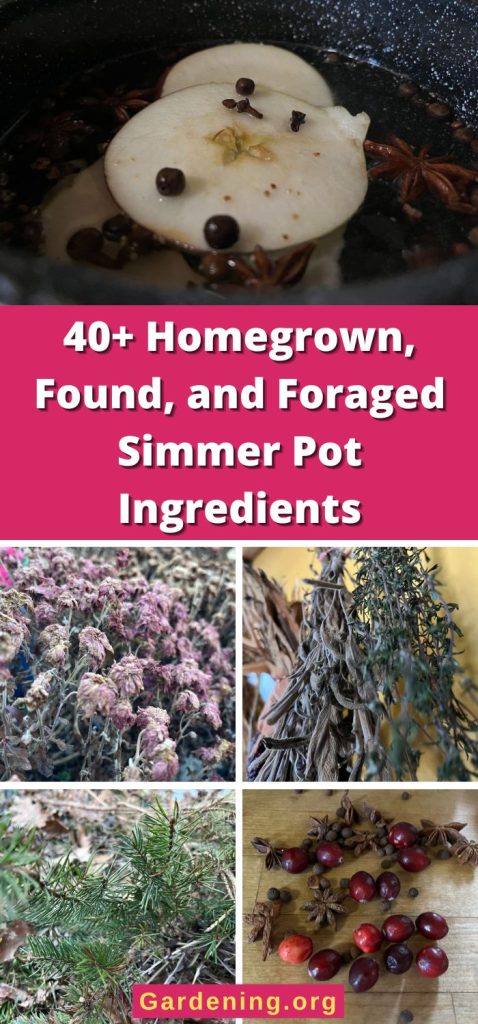
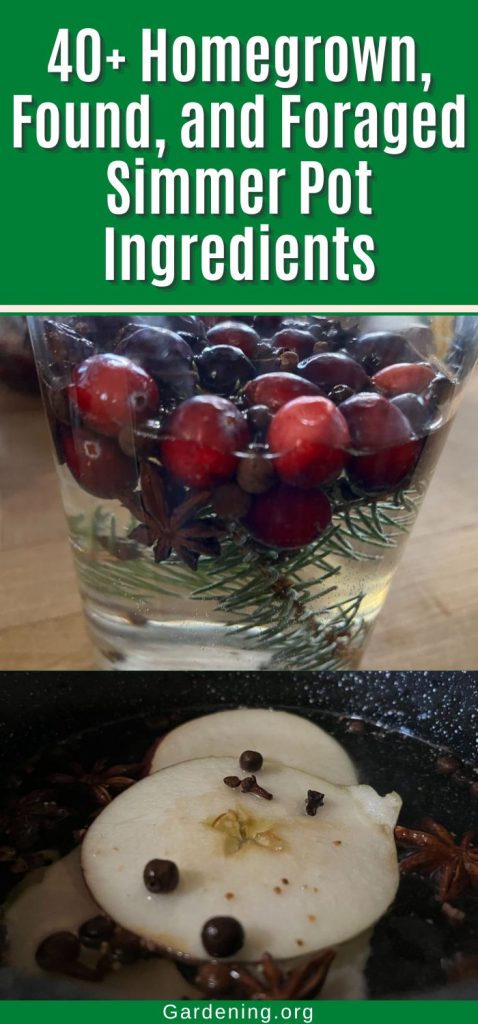



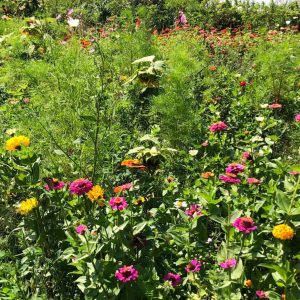
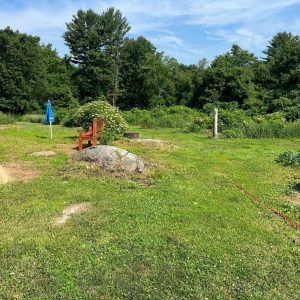
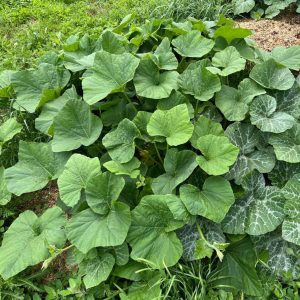
Leave a Reply